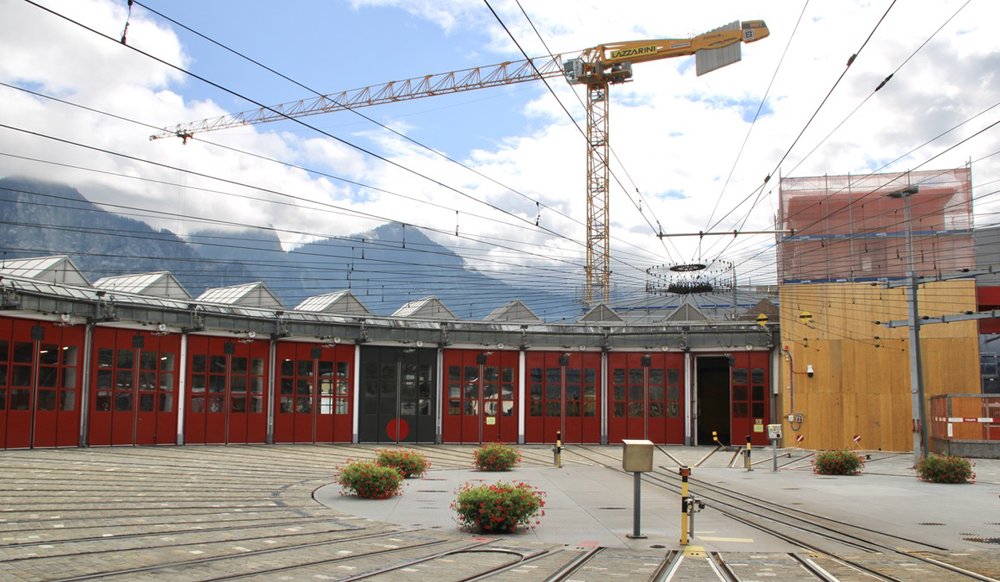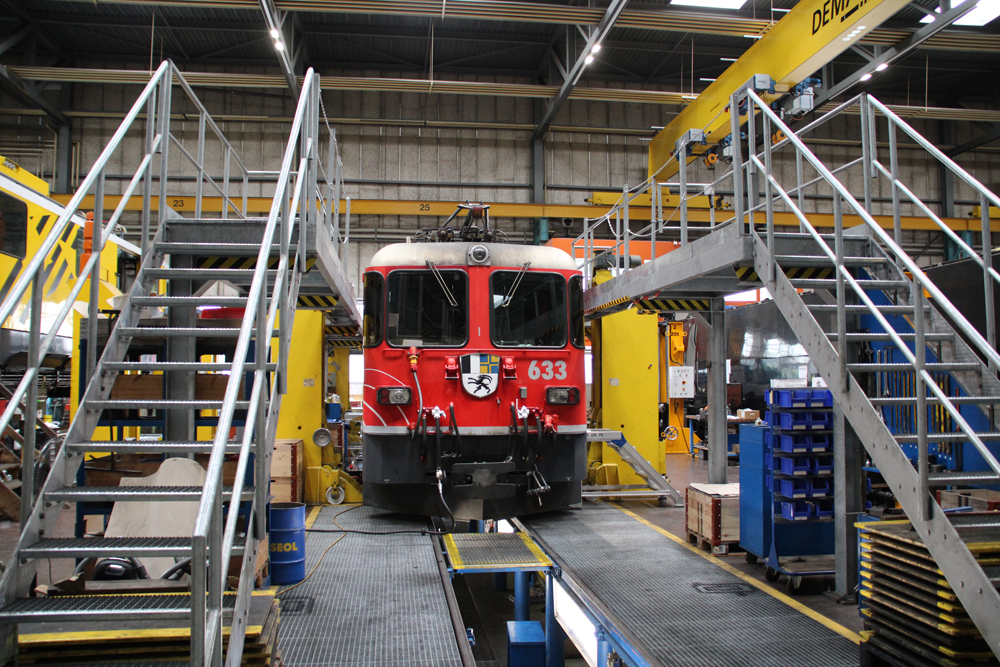For a number of years, I was in charge of the mechanical department of the Belt Railway Company of Chicago headquartered in the city’s Clearing Industrial District. Here was located a fine shop, that, in the best tradition, had been successfully converted from steam locomotive maintenance to a modern diesel shop.
It was a long shop, consisting of three bays, with tracks arranged at right angles to the main axis of the building. It was also a very high shop, with a 150-ton-capacity bridge crane traveling overhead the full length of the building with two 10-ton cranes running below the large one.
In June 1964, EMD GP7 No. 473 was in the shop for general repairs. When its scheduled work was completed, the task was to lift the unit from its short shop-bay track onto a through track in order to move the locomotive out of the building.
In the early afternoon, the shop foreman instructed the crane operator, an experienced and reliable employee, to lift 473 and move it southward over other locomotives in the shop and place it on a through track. But the traveling move was made with too much speed, and when the bridge crane stopped over the track, the locomotive swung wide from its inertia. Its swing back caused one of the transverse spreaders to hook under the main crane girder and the locomotive to strike heavily against the crane. The final position of the locomotive boxed the crane operator in his cab.
I happened to be walking from my office and entered the shop a moment after the mishap occurred. I was dismayed to see the locomotive tipped almost 35 degrees transversely and at about a 15-degree slope lengthwise, the short hood pointing upward. Worse yet, the cable slings on the high side were barely encircling the lifting lugs on the locomotive frame. A number of shopmen appeared stunned by what had happened; others were concerned, for they were working on the adjacent tracks.
The situation was serious. If the locomotive fell, bolts, nuts, and other items would fly like shrapnel throughout the shop. The locomotive — and possibly my career — would be destroyed.
I spent about two hours assessing the few options available. One was to try to lower the locomotive with the crane in the hope she would right herself, but I dismissed this as too risky – the slings could very well slip off the lifting lugs, and all would be lost. I first determined that if we did not move or disturb the crane, but keep the power on to energize the hoisting brakes, we could safely work under the hanging locomotive. Then, I decided to build cribbing up from the shop floor to the locomotive and straighten her up with jacks.
I got William Termunde, of our maintenance-of-way department, on the phone and asked him for a gang of men and a large supply of crossties. Over the years, Bill and I had often disagreed on the cause of minor derailments. He would contend that my engines had sharp wheel flanges, and I would point out that his switch joints were worn or did not fit properly. These matters were resolved amiable, and we would always cooperate on a joint problem.
We had a huge stockpile of ties stored not far from the locomotive shop, and by about 5 p.m. Bill had rounded up sufficient manpower and was trucking ties into the shop where the 10-ton crane could reach them.
We began to build up the cribbing about 20 feet wide at the base (we could not foul parallel tracks in the shop, which were in use), and with a length that would suit the locomotive when the crib was finished. As the evening progressed, the crib became ever higher, tapering upward from the base to a final length on top that matched the 31-foot spread of the body bolsters on the diesel.
Word of the project spread quickly. Engine crews going on and off duty, and other employees, would enter the shop to observe the unusual activity. On the adjacent tracks, we continued light running repair work on other engines. One visitor exclaimed, “They’re building a pyramid in the shop!”
About 2:30 a.m. the crib was finished and ready to accept the weight of the 125-ton locomotive — the track people had done their work well. Now, my men set the jacks high up on the cribbing, and we straightened up the locomotive in both directions. With an additional slight lift of the jacks, the slings now slackened and we were able to move the transverse beam away from under the bridge girder of the crane and release the crane operator from his cab.
With the slings reset and secure, it was possible to lower the locomotive slowly and evenly with the crane while the men pulled the ties away and the cribbing was rapidly dismantled. Shortly after dawn, the 473 was sitting on the rail facing the rising sun through the large open doors.
I waited until the business day began at the general office to make my report by telephone to BRC President and General Manager L. A. Evans.
“Mr. Evans,” I said, “the Locomotive Department spent a great deal of the Track Department’s money last night.” I recounted briefly the events that had occurred and finished up by saying, “The locomotive is safely on the rail, there were no personal injuries, no damaged material, and no delays to engine service from the terminal.”
I was surprised by an unusually mild response: “You have had an adventurous evening, Vern. Go home and get some sleep!”













